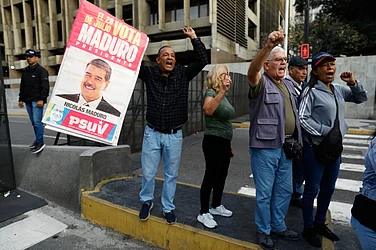As Russia’s invasion of Ukraine continues unabated, Russian forces pressed their attack on a crucial energy-producing Ukrainian city by shelling Europe's largest nuclear plant early Friday, sparking a fire and raising fears that radiation could leak from the damaged power station. The assault on the eastern city of Enerhodar and its Zaporizhzhia nuclear plant came as the invasion entered its second week with Russian forces gaining ground in their bid to cut off the country from the sea. Local mayor Dmytro Orlov said that this could bring the lives of thousands of people under heavy risk and called it a threat to world security.
Later, the Ukrainian military said that the military attack had damaged a part of a reactor building. However, the plant was said to be operating safely. Nuclear monitors said there was no change to radiation levels.
Warnings have been sounded that fighting around the plant could cause a possible nuclear disaster that could affect large parts of Europe. In an emotional speech, Zelenskyy said that the manhandling of the plant can put an end to the entire Europe. “The end for everyone. The end for Europe,” he said, adding, “Only urgent action by Europe can stop the Russian troops. Do not allow the death of Europe from a catastrophe at a nuclear power station.”
What do we know about the Zaporizhzhia plant?
The biggest nuclear power plant in Europe and among the 10 largest in the world, the Zaporizhzhia plant accounts for one-quarter of Ukraine’s power generation. It was first commissioned in 1984, two years after the Chernobyl disaster and since then, it has been expanded.
Situated in Enerhodar, a city on the banks of the Dnieper River, the plant has six Russian-designed nuclear reactors. Analysts say that the Zaporizhzhia reactors are of a different and safer type, analysts said.
Earlier in May 2014, attempts were made to seize the plant. Roughly 40 armed members claiming to be representatives of the Right Sector had tried to gain access to the plant, but they were stopped by the Ukrainian forces. In December 2014, one of the reactors was shut down following a short circuit in the power outlet system.
What if there’s a meltdown?
The attack and shelling are courting fear of a similar incident like the Chernobyl disaster. Experts warn that a modern war around the reactors can lead to the destruction of one. The problem would begin if any of the reactors lost their connection with the external grid.
In an interview with ABC, Nuclear expert Maria Rost Rublee said that if any of the reactors lost the connection, the results could be worse than Chernobyl. She said, "This is quite dangerous. It's exactly what we were warning about. This is the first time we've had an active war carried out among active nuclear power plants. The real worry here is that firefighters and plant operators, because of the active war going on, won't be able to get to the plant to take care of it the way it needs to happen."
Experts have further warned that any kind of meltdown would just not be dangerous for Ukraine, but the whole of Europe and even Australia. Nuclear radiation cannot be controlled by space, if it goes into the air, it would affect all the people.
The plant's reactor is a different type than the one used at Chernobyl, and there should be a little risk if the containment vessel is not damaged and outside power can be restored, said Jon B. Wolfsthal, a former senior director for arms control and nonproliferation at the National Security Council and former special adviser to then-Vice President Joe Biden. “Everyone needs to take a step back and not jump to conclusions,” Wolfsthal, now a senior adviser at Global Zero, said on Twitter.
What has been the latest update?
Plant spokesman Andriy Tuz stated that shells were falling directly on the plant and had set fire to one of the facility’s six reactors. That reactor is under renovation and not operating, but there is nuclear fuel inside and firefighters could not get near because they are being shot at. Elevated levels of radiation were detected near the site of the plant.
According to a report by Reuters, an official at Energoatom, the state enterprise that runs Ukraine's four nuclear plants, said that the fire was out and no further fighting was reported. He further added that the radiation was normal and Russian forces were in control. However, he said his organisation no longer had communication with the plant's managers, the report adds.
Response from world leaders
Ukrainian Foreign Minister Dmytro Kuleba called on Russia to end its attacks near the power station.
The American Nuclear Society condemned the attack but said the latest radiation levels remained within natural background levels.
“The real threat to Ukrainian lives continues to be the violent invasion and bombing of their country,” the group said in a statement from President Steven Nesbit and Executive Director and CEO Craig Piercy.
The International Atomic Energy Agency said it was in contact with authorities in Ukraine. The agency's director-general, Mariano Grossi, urged military forces to refrain from violence near the plant.
Ukraine's Foreign Minister Dmytro Kuleba said entire Europe is at risk of a repeat of the nuclear catastrophe.


























